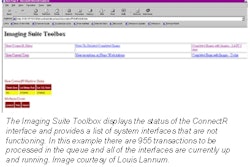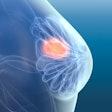SALT LAKE CITY - The choice to implement PACS is now a no-brainer, according to Dr. Jeremy Young, professor of radiology at the Medical University of South Carolina in Charleston. But that doesn't mean a healthy dose of planning isn't necessary.
In a SCAR University session today, the former SCAR chairman provided tips for those planning to acquire digital image management systems. Before delving into planning strategies, however, Young provided further impetus for those who may be unsure about how to justify a move to the digital domain.
"How can you seriously justify a system that realistically has not changed for over 100 years?" he said. "Would you seriously put in a [film-based system] today when you could have [a PACS] that will do the whole job digitally, allowing you to look at any number of images, at any number of locations at the same time, and today, that costs less?"
When the decision to go with PACS has been made, institutions have to decide whether they will deploy the technology as a miniPACS configuration or to target specific problem areas, such as the intensive care unit, he said.
A full-blown PACS is also an option, although unless a new hospital or imaging department is being built, a phased installation strategy is probably most likely, he said.
The acquisition approach is another important decision. Today, options such as leasing and application service provider (ASP) models may make more sense than the traditional ownership approach.
"Owning PACS is becoming less attractive because of alternatives (such as) leasing, with the continual upgrades that are coming almost monthly," Young said. "Or even the ASP, where you really don't have any capital acquisition costs at all."
The changing nature of PACS technology must also be considered in the acquisition decision. The industry shift to Web-based approaches is of particular note, he said.
Of course, PACS must be integrated with a radiology information system to be successful, Young said.
"You would have no concept of where the patients are, where the films are, whether they've been read or not," he said. "Trying to do it without a RIS is really tantamount to suicide."
Without an understanding of your institution's workflow, you will not gain benefit from PACS, he said. Vendor site visits are helpful to evaluate PACS technology, although users should be sure to test the system, including sitting down at the workstation to evaluate its features. Many of today's workstations are beset with extraneous bells and whistles that clutter up the display and make it harder for radiologists to do their jobs, according to Young.
"What you want to see is an x-ray that you can read," he said.
A PACS planning team may consist of:
- Lead radiologists (champion)
- Chairman of radiology
- PACS manager
- Radiology IT person(s)
- Hospital/facility IT person(s)
- CEO
- CFO
- Department administration
- Nonradiology clinicians: surgeons (neuro/ortho/ENT), neurologists, ER, and chest
- Consultant (maybe)
Training and preparation should not be underestimated, Young said. And involvement of the clinicians is critical.
"Your biggest adversaries or your biggest helpers are going to be the surgeons, particularly the neurosurgeons and the orthopedic surgeons," he said.
Upon implementation, training must be provided to all users, of course, a process that occasionally can be frustrating. "If you offer training, they won't come, but if you don't, they will scream like hell," Young said.
In addition, a hotline should be set up to deal with problems, and PACS training shouldn't be limited to physicians.
"The nurses on the floors and in the clinics, those are the ones who are really going to be using the system," Young said. "Go to them and train them and work with them. Even the most cantankerous doctor will not be cantankerous if their nurse already has the film up for them (on the workstation)."
By Erik L. Ridley
AuntMinnie.com staff writers
May 5, 2001
To view the rest of AuntMinnie's coverage of the SCAR meeting, just go to our RADCast@SCAR 2001 at http://scar.auntminnie.com.
Click here to post your comments about this story in our PACS Digital Community. Please include the headline of the article in your message.
Copyright © 2001 AuntMinnie.com




















